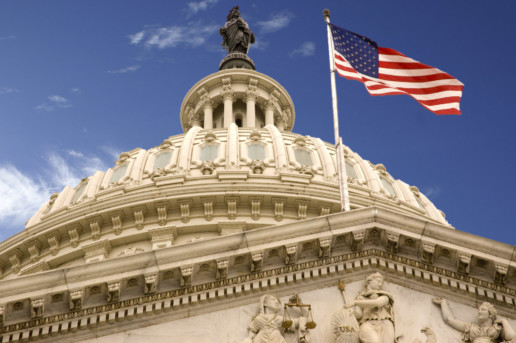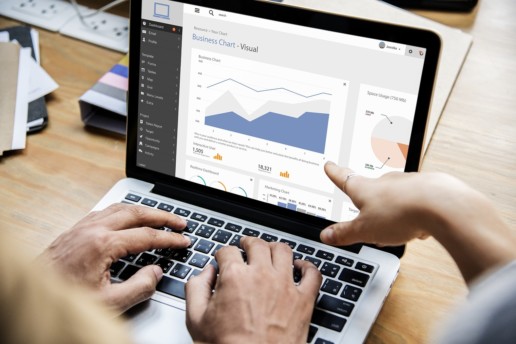Creating Better Employee Benefits With Advanced Analytics
It is important to provide a workplace, employee benefits and payment system that keep your employees happy. Read this blog post to learn how you can create better employee benefits with advanced analytics.
Job satisfaction is the most important part of maintaining a happy workforce. If you have a workforce that feels like they could get a better deal elsewhere then they are likely to leave.
It is therefore important to provide a working environment, benefits and payment system, that keeps your employees happy without breaking the bank.
Analytics are being used to make sure that this is being done effectively, seeing where discontent is occurring and helping to suggest how this can be solved.
For instance, there are research companies that can use text analysis tools to analyze hundreds, if not thousands of survey entries that can give a holistic view of employee benefits. Often when survey results are being analyzed by an individual, it is difficult to gauge the overall feeling and there can be bias put on the results.
It also allows for HR to note the frequency of meetings with individuals as well as the frequency and size of any pay rises. If it is flagged that somebody hasn’t had a meeting with HR where they can directly communicate any concerns for a considerable amount of time, then tho scan be rectified.
Analytics can also be used to investigate which teams are happiest, have the highest retention rates or are the most profitable. This then allows companies to investigate in detail what is making these teams happiest or most productive, then create benefit packages to create similar results for other teams in the company.
Analytics and data have allowed companies to collect data to make their workforces happier and more content. This, in turn, creates situations where employees are eager to work and appreciative of the benefits they receive, improving ROI and increasing productivity.
SOURCE: Pannaman, E. (12 October 2018) "Creating Better Employee Benefits With Advanced Analytics" (Web Blog Post). Retrieved from https://channels.theinnovationenterprise.com/articles/202-creating-better-employee-benefits-with-advanced-analytics
5 critical elements to consider when choosing an HSA administrator
The Employee Benefit Research Institute recently reported that 83 percent of today’s workforce said health insurance was very or extremely important in deciding whether they would change jobs or not. Read on to learn more.
If anyone needed any reminding, health insurance is still an urgent matter to today’s employees. According to Employee Benefit Research Institute’s 2017 Health and Workplace Benefits Survey, 83% of the workforce said that health insurance was very or extremely important in deciding whether to stay in or change jobs. Yet research has uncovered that employees tend to delay or disengage from retirement and healthcare decisions, which they view as difficult and complex.
Fortunately, with consumer-driven healthcare plans and health savings accounts on the rise, benefits managers have a real opportunity to turn this frustrating situation into a positive one for their workforce. A critical step in doing so is choosing the right health savings administrator.
Employers should consider the following five elements when choosing a health savings administrator, or for evaluating the one with which you’re currently working.
1. Minimize risk by ensuring business alignment. Look for a health savings administrator that aligns with your company’s mission and business goals. Lack of business alignment can create real risks to your organization and employees and can damage your company brand and employee experience. For example, if your account administrator nickels-and-dimes you and your employees with added fees, you’ll experience higher costs and reduced employee satisfaction.
2. Service, support are key to employee satisfaction. It’s a fact: Employees will have HSA-related questions — probably a lot of them. Their questions may range from pharmacy networks and claims to the details of IRS rules. That’s why account management and customer service support from your health savings administrator are vital. Having first-class customer service means that employees will be better educated on their savings accounts, which can result in HSA adoption and use to their fullest potential.

3. Education, communication drive adoption. Educating employees about health savings accounts using various methods is critical, especially in the first year of adoption. This ensures your employees understand the true benefits and how to maximize their account. As CDHPs require more “skin in the game,” consumers show a higher likelihood to investigate costs, look for care alternatives, use virtual care options, and negotiate payments with providers. These are all positive outcomes of HSA adoption, and an HSA administrator oftentimes can offer shopping, price and quality transparency tools to enable your employees to make these healthcare decisions.
4. Understand the HSA admin’s technology. Because most spending and savings account transactions are conducted electronically, it’s critical that your administrator’s technology platform be configured to deliver a positive user experience that aligns with your expectations. It should allow for flexibility to add or adjust offerings and enable personalization and differentiation appropriate for your brand.
Be aware that some vendors have separate technology platforms, each running separate products (i.e., HSAs versus FSAs) and only integrate through simple programming interfaces. Because the accounts are not truly integrated, consumers may need to play a bigger role in choosing which accounts their dollars come from and how they’re paid, leading to consumer frustration and an increase in customer service call volume. With a fully integrated platform, claims flow seamlessly between accounts over multiple plan years, products and payment rules.
5. Evaluate your financial investment. Transparent pricing and fees from your health savings administrator is important. Administrators can provide value in a variety of ways including tiered product offerings, no traditional banking fees or hidden costs, and dedicated customer service. It’s important to know what these costs are up front.
Evaluate your financial investment by knowing whether or not your health savings administrator charges for program upgrades, multiple debit cards, unique data integration requirements, ad-hoc reports and more. These fees can add up and result in a final investment for which your company didn’t plan. And, it’s best to know in advance if your account holders will be charged any additional fees. Not communicating these potential fees at adoption can lead to dissatisfaction, which can then hurt your employee satisfaction ratings and complete adoption of the savings account products.
Choosing a health savings administer is a critical decision that affects not only employee satisfaction but the entire company. With eight in 10 employees ranking their benefits satisfaction as extremely or very important in terms of job satisfaction, according to EBRI, taking the time to fully vet your health savings administrator will pay dividends.
SOURCE: Santino, S. (5 November 2018) "5 critical elements to consider when choosing an HSA administrator" (Web Blog Post). Retrieved from https://www.employeebenefitadviser.com/opinion/what-to-consider-when-choosing-an-hsa-administrator
DISCOVER THE WELLNESS TRENDS FOR 2019
Did you know: A clear space equals a clear mind. Minimalism is one of the new wellness trends for the New Year. Read this blog post for more 2019 wellness trends.
It’s that time of year again when we cast our minds forward and bring you our predictions for the wellness trends that are set to relax, improve and make us feel better about ourselves in 2019. And let’s be honest it feels as if there’s a new trend every week at the moment, so we’ve sifted through the trend trough to tell you ALL about the ones you absolutely need to know about!
Reconnecting With Nature
As a predecessor to the digital detox trend of last year (although heaven knows we still haven’t mastered that one yet!) 2019 is all about shifting our backsides off of the sofa and actually *gasp* leaving our homes to reconnect with nature. The focus is very much on disconnecting i.e. leaving your phones and even your fitness trackers (sorry you’ll have to manage without the steps for this one) in order to reconnect. You see exercising outside is all well and good, but it starts to become detrimental when we begin putting too much pressure on ourselves to hit the next PB or when we become obsessed with comparing ourselves against our friends on the Fitbit leaderboard.
Hey, I’m all for healthy competition and that heady endorphin rush when you smash out an all-time best, but to truly enjoy the benefits of what nature can do for our health we need to unplug and pay attention to what is out there – without the distractions!
From moonlit yoga on the beach to forest bathing in the sensual shadiness of the beautiful English woodland, learning to embrace your inner mother nature is all about fine-tuning the senses. It’s essentially another branch of mindfulness that allows us to break free from the stressful trappings of the modern world and find inner peace and gratitude for the world around us.
Soothing Sounds
You must have that one song that makes you feel amazing? That song that no matter how down in the dumps you are, when you hear those first notes you’re up dancing and feeling as if nothing can stop you. Music’s funny like that isn’t it? It evokes all kinds of emotions in us – from positive uplifting vibes, sorrow and sadness, motivation and drive, right through to silliness and freedom of expression – music has a power over us like no other.
And the sound, of any description, is no different. Think about when you visit a spa, often there will be sounds of the rainforest, birds chattering in trees or that peaceful drift you off to sleep music, floating over the space, creating a calm and serene ambiance and helping you to relax and switch off.
Sound therapy works through the healing power of sound vibration and frequencies. All of us have our own natural frequencies and when we are exposed to the external frequencies of singing bowls, gongs, tuning forks, drums etc. and allow them to wash over us and resonate with us, natural healing of both the body and mind can begin to occur. For example, Tibetan singing bowls can help people to experience a deep sense of relaxation, which can relieve pain, help lower blood pressure, reduce stress, improve circulation and blood flow, balance the Chakras, create focus and emotional clarity and leave people feeling at peace and happy with themselves.
Everyone has the ability to connect with the healing power of sound and most important of all it gives us that chance to focus on just one of our senses, which in a world where our senses are continually blasted with information overload, this is one of life’s most simple of luxuries. Sound classes are becoming increasingly popular for this very reason and many also incorporate the practices of yoga and meditation within them to further aid the wellness experience.
Color Therapy
Do you have a favorite color? There’s a good reason why you are drawn to one color over another and it’s all to do with energy and the way it makes you feel.
Color is energy that is transmitted on different wavelengths and frequencies to create different colored light. There are seven shades of visible light, the rainbow colors, then there is white which contains all of the 7 shades, black which absorbs light and therefore appears void of color, and then there are literally millions of invisible colors that our eyes cannot see. Color therapy, or Chromotherapy to give it its official name, is all about using color to enhance our health and wellness in certain ways. Each color has its own vibrational frequency that relates to different physical symptoms and emotions.
BLUE – This is a calming color that is used to ease symptoms of pain, anxiety, depression and can even aid sleep. Yes I know we’re told the blue light emitted from our screens is bad for us, but that’s a synthetic digital light, so I’m afraid scrolling through Instagram in bed won’t have the same effect! Research has also shown that blue light can help lessen inflammation, lower fevers, reduce high blood pressure and relieve migraines, due to it’s cooling almost anesthetic style energy.
RED – The fiery, powerful color that denotes passion and confidence. It’s bold and powerful and will give you balls when you need it most. And as such, it is thought that being exposed to red light will increase your pulse, raise your blood pressure and increase your breathing rate. Doesn’t necessarily sound too good, right? But red is the color to energize, to motivate and to put yourself out there and show people you mean business. Infrared therapy is also used to activate collagen cells, stimulate the skin to help reduce the appearance of fine lines and wrinkles and can speed up the healing process.
YELLOW – This bright cheerful color does as you would expect; it uplifts, invokes optimism and a real sense of self love in a person.
GREEN – The color of nature, green is associated with harmony and it provides a neutral, positive and calming effect.
ORANGE – This color can raise energy levels and help improve mood, I mean who can’t but raise a smile when you see something bright orange!?!
PURPLE – The mean and moody one, the color of royalty, richness and luxury. Purple is the color for tranquility and works well in a detox sense, stripping the body and mind of impurities and can help patients deal with that sense of mind over matter when dealing with chronic pain.
And then there’s Colorstrology – a bit like astrology, but this is the idea that each birth month has its own color, which is a reflection of your personality. To find out yours go to the Pantone website and pop in your birth date.
2019 sure is set to be a colorful one that’s for sure!
Sleep Hygiene
We all need sleep to survive, it’s a chance for our body and mind to rest, recharge, repair and grow. However, there aren’t many of us that are a) getting enough sleep and b) getting good quality sleep. 2018 saw the rise in good sleeping practices, with power naps and sleep yoga hitting the wellness scene. But 2019 is set to move on from this by teaching us the ways in which we can employ these good habits at home. And it’s much more about quality rather than quantity. Because yes we should be aiming for around about 7 hours of shut-eye a night, but surely 4 hours of quality sleep is way more beneficial than 8 hours of disrupted sleep?
Sleep hygiene is about being ‘clean’ with your sleep, which means setting good practices and routines such as the following:
- Avoiding caffeine late at night.
- Switching off screens and other devices at least an hour before going to bed – and ideally, you don’t even want them in your bedroom.
- Get the temperature just right- not too hot and not too cold.
- Ensure the room is dark – blackout blinds are your new best friend.
- Keep noise to a minimum, or if that’s impossible due to noisy neighbors or yapping dogs then try listening to white noise which will drown out the other sounds and has a calming, sleep-inducing effect.
- Comfort is key to ensure you have a good mattress, a duvet tog that you’re happy with and good supportive pillows.
You may well think that you can catch up on any missed sleep during the week at the weekend, but irregular sleep is far more damaging. Instead aim to finish work by a set time and give yourself a deadline to be in bed, even if you’re up there and reading for half an hour beforehand, that will help you relax and unwind from the day.
And if you’re someone who struggles to switch off and get to sleep try having a warm bath, drinking a hot milky drink, meditating, or practicing some deep breathing exercises before settling down for the night. These are all things that help induce sleepiness and should see you dozing off in no time.
Ultimately if you eat well, exercise regularly and keep those stress levels down then your sleep hygiene should be pretty damn clean. If you don’t… then perhaps that’s something you could work on in 2019!
Less Is More
Minimalism, the KonMari method, decluttering… call it what you like, but essentially all you need to know is that a clear space equals a clear mind.
Go on, try it.
Choose just one cupboard in one room of your house, drag everything out and then set to work sorting out what you do and don’t need. It’ll be tough, especially when you start finding long lost treasures or useful kitchen gadgets you’d forgotten about, or that top you wore back in 1992 that made you look like a bohemian princess, but you need to set yourself limits. Marie Kondo, the queen of clutter-free living, theorizes that we should only hang onto possessions that ‘spark joy’, those that don’t only serve to hold us back and bring negativity into our lives. And it’s certainly a good place to start. Can you honestly say that vegetable peeler shaped like a pencil sharpener brings you joy? Or does it annoy you because every time you go to open the drawer it catches and makes the drawer jam? And that book you’ve clung onto from your days at uni, the one riddled with post-it notes and pencil scrawled study notes… does it bring you joy? You can’t ever read it properly again, it’s probably out of date and so therefore no longer suitable as a study guide for anyone else and all it’s really doing is taking up space and gathering dust on your bookshelf.
The thought of getting rid of your belongings is a scary one. Objects become security blankets, but they are restrictive and oppressive and are preventing you from living your best life. Existing in a tidy and clear space, whether it’s within the work or home environment, can help reduce stress levels, conserve mental energy, give us clarity, make us more productive and most importantly of all can make us feel in control. And when you’re in control you can achieve anything!
Clean Air
As much as we’re all for clean air outside, is it actually doing us any good if our home or work environment is riddled with all kinds of chemicals – yes I’m deffo thinking of those plug-in air fresheners!!
Whether you fill your rooms with plants (they’re amazing at purifying the air and look pretty spesh too!), pay more attention to the ingredients used in your cleaning sprays etc. or even download an app that can tell you how pure the air is – yes really! – 2019 is 100% about living clean. We’ve done the clean eating thing, started to adopt the clean sleeping thing, so it was only a question of time before clean breathing became a thing.
Sales of air purifying plants have more or less tripled over the past year as people strive for that natural air in their homes. If you listened to your Biology teacher at school, you’ll know that plants are capable of turning carbon dioxide into vital oxygen, but they are also great at absorbing unwanted nasties such as formaldehyde, benzene, ammonia, acetone etc. which are found in so many of the items we have in our homes and workspaces.
Crystal Clear Water
Crystals were everywhere in 2018, helping us with their energizing vibes and well they just look so pretty don’t they!?! And don’t worry, they’re not going anywhere, they’re just infiltrating other areas of our lives, namely… our water bottles. Yep, that’s right, you’ve seen the fruit, veg and herb infuser water bottles, now it’s time for the crystal infused ones!
Not only does it take a good Instagram picture (these are beautiful things peeps!) but the crystal gets to work its magic by pouring out all of its positive energy into the water you’ll be sipping on. Crystal gurus have been doing this for donkey’s years, but for us newbies, crystal-infused water is big news. It’s basically creating an essence and so it is up to you which crystal to insert in your water bottle for any given day.
One thing you must, must, MUST make sure of is that any crystal you use is safe to be put in water. Certain stones may dissolve, whilst others may contain lead or corrosive chemicals. A quick Google search is all that should be needed to confirm whether a crystal is safe in water or not and it’s worth keeping a list of the ones you can and cannot use and storing them in different places so you don’t get confused.
It certainly takes drinking crystal clear water to a whole different level, doesn’t it!?!
SOURCE: Stafferton, B. (11 July 2018) "DISCOVER THE WELLNESS TRENDS FOR 2019" (Web Blog Post). Retrieved from https://artofhealthyliving.com/discover-wellness-trends-2019/
Give employees time back in an always-on working world
Occasionally, work extends beyond the traditional workday, no matter how efficient your employees are. With time being the most precious benefit of all, a growing number of employers are offering benefits designed to save employees time. Read on to learn more.
When it comes to employee benefits, what do people really want?
As HR and benefits professionals, we shouldn’t make broad assumptions or generalizations about what benefits our employees need or want. Each employee in any given organization is an individual with different circumstances to be met at every stage in their lives — from those entering the workforce to those preparing to retire, and everyone in between. This is why employers must differentiate their benefits packages to meet the needs of a diverse and multigenerational workforce. And as consumers demand more choice in how they spend their benefits dollars, employers are getting more creative and curating a more expansive set of options for everyone.
No matter how efficient an employee is, work inevitably extends beyond the traditional workday from time to time. Similarly, as the lines between home and work blur with flexible work arrangements and email available 24/7 on smartphones, employees still need to take care of personal tasks, like scheduling family dentist appointments, setting up child care, disputing medical bills or calling the veterinarian … all during the workday.
Regardless of generation, industry, position or title, people are yearning to find the right balance between work and life demand. Time is the most precious benefit of them all. As a result, there are a growing number of employers offering benefits designed to save employees time.
Previously offered predominantly by large, tech companies in Silicon Valley, we’re seeing time-saving benefits spread to employers and industries of all kinds and encompass a variety of conveniences, from on-site dry cleaning pickup, to employer-funded shuttles to get employees to and from work, gym memberships, grocery delivery and services like dog walking and personal errands. This benefits category can also include more significant, personalized benefits like concierge health services, assistance in evaluating elderly care options, telehealth for humans and pets, and emergency childcare services.
Once seen as just perks, these services run deeper. Employers care about their people, and these time-saving benefits — anything people leave work early for, or deal with during the work day — has created a new benefits category that increases employees’ productivity and capacity for work by eliminating distractions and freeing up mental space. While these types of benefits may seem like “nice to have” instead of essentials, they can add up and make a substantial difference in employees’ lives.
Life is complicated. Things go wrong that impact productivity, contribute to presenteeism and the well-being of our workforce; these employee benefits offered through employers are returning valuable time back into someone’s day, helping them focus on work and better balance work and life expectations.
Employees need HR’s help. By not offering a wide variety of benefits personalized to the workforce, employers are missing out on an opportunity to provide great value to employees and make a tremendously positive change in their lives. But many HR professionals falsely assume employees will ask for voluntary benefits directly and proactively make suggestions about what would help them. You may say, “My employees aren’t coming to me asking for things like elder care services, so they don’t need them.” My response is, of course, they’re not asking: they may not want you to know about challenges they’re facing in their personal lives.
Employee’s personal situations are just that - deeply personal. They may be suffering in silence. Americans are now facing the highest housing, education and medical costs in our history, meaning nearly everyone is stressed out about family, work and finances; it’s causing problems in the workplace. If their minds are somewhere else and not focused on work, their productivity could be suffering.
Open Enrollment is rapidly approaching. Don’t wait for your employees to ask you for benefits. Take advantage of OE to ask your employees what they’re looking for, as this is the time they’ll already be assessing what types of benefits they need in the coming year anyway. Use this time to survey the workforce to see what people do or don’t like about their benefits. Be sure to specifically ask “What can we offer you?”
It’s a question, and a gesture, that may matter more to employees than you know.
This article originally appeared in Employee Benefit Adviser.
SOURCE: Oldham, J. (14 September 2018) "Give employees time back in an always-on working world" (Web Blog Post). Retrieved from https://www.benefitnews.com/opinion/give-employees-time-back-in-an-always-on-working-world?feed=00000152-18a4-d58e-ad5a-99fc032b0000
How to create a strong communication plan for open enrollment
What is your communication plan for open enrollment? Now that you have your plan changes locked in, it's time to focus on communicating those changes to your employees. Read this blog post to learn more.
Ready or not… the Benefits Super Bowl is here! Whether you are a broker, benefits manager or anywhere in between, you have been knee-deep on plan updates, rate reviews and benefit changes for months. Now that the plan changes are locked, it’s go-time! The focus is now on communicating and educating employees about their benefit options.
It takes an enormous amount of planning and execution to provide a productive open enrollment experience for employees. But, it is well worth it as this is often the only time during the year that employees stop to consider their benefit options.
Learn from past wins and misses
Consider previous years’ open enrollment communications and ask yourself the following:
- What is the feedback you received from employees (the good, the bad and the ugly)?
- What were the most common questions?
- Were there key pieces of information employees had difficulty finding?
Learn from the answers to these questions and then craft your content in a clear and concise manner that is easier for employees to digest.
The communication medium is key to your success
Now that you’ve developed the content to communicate, the next equally important step is determining how, when and where you deliver this information. Is there a centralized location where employees can find information for both core and voluntary benefits? Is the information in a format that the employee can easily share with his or her significant other?
It is critical to have multi-channel communications to reach your audience. Some employees may naturally gravitate to a company-wide email and the company intranet, while others lean on more interactive mediums like E-books, text messages, webinars or lunch and learns. Providing a variety of communication avenues ensures you are reaching employees where they want to receive information.
Make sure your communications campaign provides educational materials at each of the key milestones during the open enrollment journey–such as prior to enrollment, midway through enrollment, and right before enrollment closes. Wherever possible, always support employees through the process and give them options to reach out for help.
How to communicate the same benefits to a diverse workforce
You are likely communicating to a group of employees with diverse needs and wants. What may be appealing to an entry-level recent grad may not resonate with a senior-level employee nearing retirement. For example, employees with young children may be especially interested in accident insurance or pet owners might look to pet insurance to help offset the costs of well-visits and routine care. If possible, tailor your communications to different segments of the employee population.
Communicating voluntary health-related benefits
Core medical benefits are what employees gravitate to during the enrollment period. Are you offering voluntary benefits to employees? The most successful voluntary benefit programs are positioned next to core medical plans on the enrollment platform. This shows employees how those voluntary benefits (critical illness, accident insurance and hospital indemnity) complement the core offerings with extended protection.
When voluntary benefit programs are positioned as an integral part of the employee benefits experience, employees are more likely to understand the value and appreciate the support provided by their employer. For example, a critical illness program can help to bridge the gap of a high-deductible health plan in the case of a covered critical condition. Communicate that voluntary benefits can be an integral part of a “Total Rewards Package” and can contribute to overall financial wellness.
Review and refine
Finally, don’t miss your opportunity at the end of enrollment to review how your communication campaign performed. Pull stats and analyze your communication campaign for next year’s open enrollment… it is never too early to start! HR managers can glean valuable information and metrics from the employee experience.
SOURCE: Marcia, P. (1 November 2018) "How to create a strong communication plan for open enrollment" (Web Blog Post). Retrieved from https://www.benefitspro.com/2018/11/01/how-to-create-a-strong-communication-plan-for-open/
Civic time off: The benefit getting employees to the polls
Does your organization offer civic time off as an employee benefit? Some companies are looking to change low voter engagement by offering new benefits to employees who vote. Read on to learn more.
Voter engagement for midterm engagement historically has been poor. Some companies are offering new benefits to change that — even offering the day off to encourage employees to vote.
American employers that provide paid time off stands at about 44%, a record high, according to the latest research from the Society for Human Resource Management survey. The human resource organization estimates 29% of these companies offer employers more than an hour or two of voting time.
Despite such accommodations, about 60% of Americans didn’t vote in the last midterm election, according to research by Vote.org, a voters’ advocacy organization. The biggest obstacle to voting was scheduling conflicts; 35% of people said they couldn’t vote because of work and school.
“There’s no federal protection for voting leave for employees, which means it’s up to the states to set their own policies. Policies are inconsistent, but some states have no laws at all,” says Colette Kessler, director of partnerships at Vote.org. “This puts employers in a powerful position to enable employees to get to vote.”
But as more Americans prepare to head to the polls for key elections in 46 states, employers including Patagonia, Zenefits and Honest Tea, are opting to give employees paid time off to make their voice heard.
Outdoor retailer Patagonia, for instance, is closing its stores as well as its headquarters and distribution and customer-service center to give employees paid time off to vote. “No American should have to choose between a paycheck and fulfilling his or her duty as a citizen,” Patagonia CEO Rose Marcario wrote in a company blog post.
Meanwhile, human resource software company Zenefits implemented a new program in which employees can take time off to vote the same way they would for a doctor’s appointment. Voting won’t cut into their sick days, vacation time or paid time off. Instead, voting gets its own designation — civic time off, or CTO. That free time can be used for voting, volunteering for a candidate, attending a school board meeting or canvassing.
“Civic time off is a new concept for the industry, and we’re excited to be among the first to offer such a benefit,” says Beth Steinberg, chief people officer at Zenefits, in a letter on the company blog. “At Zenefits, it’s been a priority to help build our team’s skill set not only as it pertains to professional career growth, but also to encourage their development outside of the workplace as engaged and empowered citizens.”
Vote.org consults with companies interested in implementing a CTO program. Based on individual business models and company culture, the organization will suggest either full days off, half days or flexible scheduling.
“One benefit we’re really excited about is offering employees a half day. It gives employees the ability to get to their polling places and do their morning routine — like getting the kids to school and running errands,” Kessler says. “And later they can convene with colleagues and celebrate Election Day. We’re seeing HR teams create afternoon lunch parties to celebrate.”
Kessler says some companies are hesitant to provide time off for voting because they’re worried about losing productivity. However, most of the companies she’s worked with have been enthusiastic about providing their workforce with time off to vote.
“We don’t see any drawbacks to offering our employees flexibility on Election Day,” says Seth Goldman, co-founder and CEO emeritus of beverage company Honest Tea, which allows its 50 employees to take a few hours of paid time off go to the polls on Election Day, at their convenience. “It’s a right we all should be proud to recognize and support however we can.”
SOURCE: Webster, K. (5 November 2018) "Civic time off: The benefit getting employees to the polls" (Web Blog Post). Retrieved from: https://www.employeebenefitadviser.com/news/civic-time-off-the-benefit-getting-employees-to-the-polls?feed=00000152-a2fb-d118-ab57-b3ff6e310000
Predictive Analytics Will Be The Silent Game-Changer In Employee Benefits
Employers can now use their own data to help fine-tune their employer-sponsored benefits packages. Continue reading to learn how this technology could be used to help fine-tune employee benefits offerings.
Last year’s World Series between the Houston Astros and the Los Angeles Dodgers came down to a seven-game battle based not only on talent, athleticism and coaching but also on data. Just as Sports Illustrated suggested back in 2014 via predictive data, the Astros were the victors.
The publication of Moneyball: The Art of Winning an Unfair Game spurred not only Major League Baseball teams to deploy predictive analytics, but also businesses to take a harder look at what their data means. It's no longer part of the hype cycle: Statista forecasts (paywall) that the predictive analytics market worldwide will reach $6.2 billion in 2018 and $10.95 billion in 2022.
I believe we are also at a transformational point in improving corporate employee benefits and our employees’ lives by embracing predictive analytics. HR is swimming in rich data. Instead of guesstimating needs across multiple generations of employees, employers can turn to their own data to fine-tune what they are offering as benefits solutions. Companies spend 25-40% of an employee’s salary on benefits. It simply makes strategic and financial sense to get it right.
Bring Employee Benefits Out Of The Dark Ages
Hiring and retaining great talent is at the very soul of almost every company’s strategy. Not surprisingly, more companies have turned to predictive analytics to give them a leg up in recruitment. However, HR benefits have lagged behind. As John Greenwood reported to Corporate Adviser, “More than half of reward and employee benefits professionals see predictive analytics as a game-changer, but 90 percent are still using spreadsheets to manage data, research from the Reward & Employee Benefits Association shows.”
One reason for benefits lagging behind recruitment in adopting predictive analytics is that the way companies choose new benefits varies greatly from business to business. Given that the majority of HR departments keep data in disparate spreadsheets, even if some HR departments conduct employee surveys or historical cost analyses, they often do not integrate the data about their workforce. If a new benefit offering is chosen based on a needs analysis, only some know the “why” behind a request from the workforce. Knowing how many employees are logging into a benefits platform is helpful; market standard benefit utilization reports provide this level of information. Yet they do not give insight into the underlying reason for an employee to utilize a benefit. The user of deeper analytics is required to look deeper into employees' behavior.
We have found firsthand that many HR departments do not have a full understanding of how their employees are utilizing their benefits across the entire offering suite. A one-size-fits-all or a one-off strategy no longer is effective. Companies must understand not only their employees’ needs but also the underlying data related to these needs to provide a valuable benefits offering.
Put Your Existing Data To Use
For the past five years, I have watched our clients glean valuable insights into what the real underlying issues are for their employees and what must be done to address these pressing needs. I also have been watching companies realize that what they thought were the core problems at hand sometimes were not.
For example, one of our national high-tech clients, with over 50,000 benefit-eligible employees, believed that a high number of their employees had children struggling with autism. This belief was initially based on input from some of their employees. After approximately 16 months, the client reviewed the masked utilization data from their benefit platform. The data illustrated that the overwhelming majority of employee families (tenfold) in fact faced challenges associated with youth anxiety, a concern that had never been expressed to HR previously. Once they reviewed what employees were doing within our platform, their results mirrored the National Institute of Mental Health’s report that approximately 31.9% of U.S. children ages 13-18 struggle with anxiety disorders.
Their own data helped them understand much more specifically where their employees’ stress lay, and their HR department was able to focus communications around it.
Getting Started
Mining and viewing use data across all benefits is ideal. This enables an employer to determine if the benefit suite is serving employees effectively. We have found that as quickly as year over year, users' behaviors shift. If a company solely chooses a benefit based on what they saw as most heavily utilized the previous year, they are not being strategic.
For that reason, HR should utilize past and current data to better predict future patterns of need for a truly strategic approach to benefit choice. With this insight, they can make better choices and serve their workforce more effectively.
Given the limitations across many employee benefit vendors today, to start initially:
1. Embrace KPIs. Agree upon them internally, and measure benefit vendors on them.
2. Work with your current vendors to determine what data they provide to support your internal analysis. Ensure you have access to all the data you need, and if not, consider a vendor change.
3. Hold possible new vendors to similar data standards, and create a transparent relationship from the start.
4. Collect current and historical data. Existing vendors can provide this history, so make sure to collect at least 2-3 years of information.
These analytics need to go deeper than basic demographics to show patterns of activity. In order to understand the benefit needs of your workforce, you'll want to analyze trends across multiple data sets: medical, pharmacy, worker's compensation, biometric screenings, utilization patterns, FMLA requests and demographic trends. From there, you can start to pinpoint what your employees need -- and the “whys” behind the needs -- in order to make a measurable impact.
While predictive analytics is still in the nascent phase in the benefits and vendor worlds, the easiest and most proactive thing any employer can do is to focus on other insights vendors can provide related to the workforce and benefit use beyond simple utilization. In doing so, you will be able to support your employees both in their work lives and their personal lives by providing them with the benefits they need to be at their best.
SOURCE: Goldberg, A. (2 October 2018) "Predictive Analytics Will Be The Silent Game-Changer In Employee Benefits" (Web Blog Post). Retrieved from: https://www.forbes.com/sites/forbestechcouncil/2018/10/02/predictive-analytics-will-be-the-silent-game-changer-in-employee-benefits/#26648166e182
IRS bumps up 401(k) contribution limit for 2019
Do you offer a retirement plan to your employees? The IRS recently raised the annual contribution cap for 401(k) and other retirement plans. Continue reading to find out what the new contribution caps are.
Participants in 401(k) and other defined contribution retirement accounts will see their annual contribution cap raised from $18,500 to $19,000 in 2019, according to the Internal Revenue Service.
The catch-up contribution limit on defined contribution plans remains unchanged at $6,000.
Savers with IRAs will see the annual contribution cap raised from $5,500 to $6,000 — the first time the cap on IRA deferrals has been raised since 2013. The annual catch-up contribution for savers age 50 and over will remain at $1,000.
Cost-of-Living Adjustment (COLA) increases will also be applied to the deduction phase-out scale for IRA owners who are also covered by a workplace retirement plan:
- for single filers the scale will be $64,000 to $74,000, up $1,000
- for joint filers where the spouse contributing to an IRA is also covered by a workplace plan, the phase-out slot increase to $103,000 to $123,000
- for an IRA contributor whose spouse is covered by a plan, the income phase-out is $193,000 to $2003,000
Single contributors to Roth IRAs will see the income phase-out range increase to $122,000 to $137,000, up $2,000 from last year. For married couples filing jointly the range will increase to $193,000 to $203,000, up $4,000 from last year.
More low and moderate-income families may be able to claim the Saver’s Credit on their tax returns for contributions to retirement savings plans. The threshold increases $1,000 for married couples, to $64,000; $48,000 for head of households, up $750; and $32,000 for singles and single filers, up $500 from last year.
The deferred compensation limit in defined contribution plans for pre-tax and after-tax dollars will increase $1,000, to $56,000. And the maximum defined benefit annual pension will increase $5,000, to $225,000.
SOURCE: Thornton, N. (1 November 2018) "IRS bumps up 401(k) contribution limit for 2019" (Web Blog Post). Retrieved from https://www.benefitspro.com/2018/11/01/irs-bumps-401k-contribution-limit-for-2019/
How data science can help employers build better benefit plans
New approaches to data science are now allowing companies to have many different definitions of data and have them all coded. Read on to learn how data science can help you build a better benefits plan.
Is your data management system overdue for an overhaul? Benefit plan sponsors don’t need to feel stuck with old systems requiring hours of manual data entry, according to Marc Rind, chief data scientist for ADP.
“I’ve been in data for a long time,” he says. “For generations, the traditional data management approach has been people having to standardize data.”
But people in different companies — even different departments of the same company – could have different definitions and means of data. An organization’s governance team would have to come up with one definition for everyone to adhere to.
With new approaches to data science, Rind says, “you’re able to have many different definitions of your data and have them all coded. It’s not about governing the definition of data but more about enhancing and publishing that data.”
With data science, employers and those in HR can see trends much more easily using automated mapping and search capabilities. This will allow them to see trends over time, like what people are choosing for their benefit plans and how benefits impact employee productivity and engagement.
“It builds context around the data,” Rind says. “For employers, they have to not only understand which benefit offerings they have to offer to employees but the effect on retention. They can also see what similar employers are offering and if they are getting higher retention rates.”
Employees can use the data to see what benefits others with similar backgrounds have chosen to get, helping them decide what their perfect healthcare plan looks like. However, they cannot yet see how satisfied people similar to them were with these benefits. Rind says that this feedback loop is important, and will become more prominent for the next generation of data science systems.
SOURCE: Spiezio, C. (16 June 2016) "How data science can help employers build better benefit plans" (Web Blog Post). Retrieved from https://www.benefitnews.com/news/how-data-science-can-help-employers-build-better-benefit-plans
9 Simple Ways to Deal With Stress at Work
The Centers for Disease Control and Prevention reports that 29 to 40 percent of Americans are extremely stressed at work. Read this blog post for nine simple ways to deal with stress at work.
According to research, the percentage of Americans who are stressed at work is high, and it’s only getting higher. According to the CDC’s National Institute of Occupational Safety and Health, studies have found the number of Americans who are “extremely stressed at work” range between 29 percent to 40 percent.
Unfortunately, work stress has significant health consequences that range from the relatively benign—more colds and flus—to the more serious, like heart disease and metabolic syndrome. But, because stress at work is so common, finding a low-stress job may be difficult or impossible for many people. A more realistic choice would be to simply adopt more effective strategies to reduce stress at work. Here are some stress management techniques to try.
Start Your Day Off Right
After scrambling to get the kids fed and off to school, dodging traffic and combating road rage, and gulping down coffee in lieu of something healthy, many people come in already stressed, and more reactive to stress at work. In fact, you may be surprised by how much more reactive to stress you are when you have a stressful morning. If you start off the day with good nutrition, proper planning, and a positive attitude, you may find the stress of the workplace rolling off your back more easily.
Be Clear on Requirements
A factor that contributes to job burnout is unclear requirements. If you don’t know exactly what’s expected of you, or if the requirements keep changing with little notice, you may find yourself much more stressed than necessary. If you find yourself falling into the trap of never knowing if what you’re doing is enough, it may help to have a talk with your supervisor and go over expectations, and strategies for meeting them. This can relieve stress for both of you!
Stay Away From Conflict
Because interpersonal conflict takes a toll on your physical and emotional health, and because conflict among co-workers is so difficult to escape, it’s a good idea to avoid conflict at work as much as possible. That means don’t gossip, don’t share too many of your personal opinions about religion and politics, and try to steer clear of colorful office humor. Try to avoid those people at work who don’t work well with others. If conflict finds you anyway, learn how to deal with it appropriately.
Stay Organized
Even if you’re a naturally disorganized person, planning ahead to stay organized can greatly decrease stress at work. Being organized with your time means less rushing in the morning to avoid being late and rushing to get out at the end of the day. Keeping yourself organized means avoiding the negative effects of clutter, and being more efficient with your work.
Be Comfortable
Another surprising stressor at work is physical discomfort. You may not notice the stress you experience when you’re in an uncomfortable chair for a few minutes. But if you practically live in that chair when you’re at work, you can have a sore back and be more reactive to stress because of it. Even small things like office noise can be distracting and cause low-grade frustration. Do what you can to ensure that you’re working from a quiet, comfortable and soothing workspace.
Forget Multitasking
Multitasking was once heralded as a fantastic way to maximize one’s time and get more done in a day. Then people started realizing that when they had a phone in their ear and were making calculations at the same time, their speed and accuracy (not to mention sanity) suffered. There is a certain kind of frazzled feeling that comes from splitting one’s focus that doesn’t work well for most people. Rather than multitasking, try a new strategy known as chunking.
Walk at Lunch
Many people are feeling ill effects from leading a sedentary lifestyle. One way you can combat that, and manage stress at work at the same time, is to get some exercise during your lunch break and perhaps take short exercise breaks throughout the day. This can help you blow off steam, lift your mood, and get into better shape.
Keep Perfectionism In Check
Being a high achiever can help you feel good about yourself and excel at work. Being a perfectionist, on the other hand, can drive you and the people around you a little nuts. Especially in busy, fast-paced jobs, you may not be able to do everything perfectly. But striving to just do your best and then congratulating yourself on the effort is a good strategy. Your results will actually be better and you’ll be much less stressed at work.
Listen to Music on the Drive Home
Listening to music brings many benefits and can offer an effective way to relieve stress after work. Combating the stress of a long day at work with your favorite music on the drive home can make you less stressed when you get home, and more prepared to interact with the people in your life.
SOURCE: Scott, E. (12 November 2018) "9 Simple Ways to Deal With Stress at Work" (Web Blog Post). Retrieved from https://www.verywellmind.com/how-to-deal-with-stress-at-work-3145273










